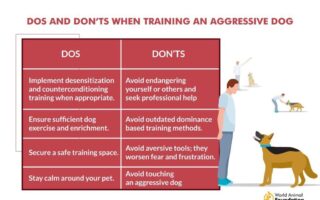Title: Unleashing Joy: The Art of Teaching Your Dog to Sit
In a world where communication transcends spoken language, the bond between humans and their canine companions is one of the most profound forms of connection. At the heart of this relationship lies a foundational command that not only nurtures discipline but also fosters understanding: the simple yet powerful instruction to ”sit.” While it may seem elementary, mastering the “sit” command transcends mere obedience; it paves the way for a harmonious coexistence, enhances safety, and strengthens the emotional ties between owner and dog. This article embarks on an exploration of the “sit dog” phenomenon, delving into the techniques, benefits, and joys of teaching our furry friends this essential command, reminding us that in the language of dogs, a single word can speak volumes.
Table of Contents
- Understanding the Sit Command and Its Importance in Dog Training
- Techniques for Teaching Your Dog to Sit Effectively
- Common Challenges and Solutions When Training the Sit Command
- Enhancing Obedience Through Positive Reinforcement Strategies
- Q&A
- Closing Remarks
Understanding the Sit Command and Its Importance in Dog Training
The sit command is often one of the first commands taught to dogs, and for good reason. It serves as a foundational behavior that not only helps with obedience but also fosters good manners in various situations. When a dog learns to sit, they are effectively learning to pause and control their impulses, making it easier to handle more complex commands and behaviors later on. Training a dog to sit can also provide them with a way to communicate calmness, which can be particularly beneficial in environments that may provoke excitement or anxiety, such as busy streets or crowded parks.
Teaching the sit command also aids in building a stronger bond between the owner and the dog. Through consistent practice, dogs begin to associate this command with positive reinforcement like treats, praise, or playtime, creating a joyful training atmosphere. Furthermore, the command can be used in various real-world scenarios, enhancing both safety and convenience.
- Meal Time: Helps prevent jumping and ensures your dog waits patiently for food.
- Greeting Guests: Encourages calm behavior when new people arrive.
- Leash Walking: Can be used to restrain excitement during walks, making outings more enjoyable.
Techniques for Teaching Your Dog to Sit Effectively
Teaching your dog to sit is not just a simple trick; it’s a fundamental behavior that can enhance their overall training experience. To begin, use positive reinforcement to encourage your dog whenever they adopt the sitting position. This can be done with treats, praise, or toys. Here are some effective techniques:
- Lure Method: Hold a treat close to your dog’s nose and slowly raise it above their head. This will encourage them to tilt their head back and lower their backside to the ground.
- Prompting: Use a verbal cue, such as “sit,” as they are lowering to reinforce the command.
- Timing: Be quick to reward your dog immediately after they sit. This helps them associate the action with the reward.
To track progress and reinforce the learning process, consider maintaining a simple training log. This can help monitor the frequency and success of your sessions while also providing a visual cue for development. Below is a straightforward table for your reference:
| Session Day | Success Rate | Notes |
|---|---|---|
| Day 1 | 75% | First attempt: Excited but responsive. |
| Day 2 | 85% | Increased focus: Less distraction. |
| Day 3 | 90% | Solid performance: Quick response to cue. |
By implementing these techniques consistently, you’ll foster a better understanding and willingness to follow your commands. Remember, patience and consistency are key in creating a positive environment for your dog to learn and grow.
Common Challenges and Solutions When Training the Sit Command
Training your dog to “sit” is often one of the first commands many pet owners teach, but it comes with its fair share of challenges. One common issue is your dog’s inability to focus on you during training sessions. Distractions from the environment, such as other animals, people, or even different sounds, can divert their attention. To combat this, it is crucial to choose a quiet, comfortable location for training. Additionally, utilizing high-value treats can help to keep your dog’s focus on you. Regular practice in varied environments will also enhance their ability to generalize the command.
Another frequent obstacle is the dog’s reluctance to adopt the sit position, particularly for breeds that may be more active or stubborn. If a dog seems uncomfortable or resistant, they might not understand the command fully. To address this, using positive reinforcement is key. With patience, you can break the command down into manageable steps. Start by rewarding your dog for lower stances, gradually encouraging them to complete the full sit. Incorporating play into training sessions can also make learning fun, fostering a positive association with the command. Here’s a simple table summarizing these challenges and solutions:
| Challenge | Solution |
|---|---|
| Distraction During Training | Train in quiet locations and use high-value treats. |
| Reluctance to Sit | Use positive reinforcement and break the command into steps. |
Enhancing Obedience Through Positive Reinforcement Strategies
When it comes to fostering a cooperative relationship between you and your furry companion, adopting positive reinforcement strategies can make a world of difference. Instead of relying on harsh corrections or punitive measures, focus on rewarding desirable behaviors. This approach cultivates trust and encourages your dog to repeat the actions that lead to positive outcomes. Here are some effective methods to implement:
- Use Treats: Small, tasty treats are excellent motivators. Reward your dog immediately after they respond correctly.
- Verbal Praise: A simple “good boy/girl!” can boost your dog’s confidence and enthusiasm.
- Physical Affection: Petting and belly rubs reinforce the bond and convey approval.
- Interactive Playtime: Use games as rewards to make training a fun experience.
Another powerful aspect of positive reinforcement is consistency. Establish clear cues and stick to them, helping your dog to associate specific commands with their outcomes. Creating a structured training schedule can also aid in retention, allowing your dog to learn at a comfortable pace. Below is a simple schedule to consider for a basic training regimen:
| Day | Activity | Duration |
|---|---|---|
| Monday | Sit Command Training | 10 minutes |
| Wednesday | Leash Walking Practice | 15 minutes |
| Friday | Recall Exercises | 10 minutes |
Combining these techniques with a regular training schedule will yield consistent progress. Celebrate each small victory along the way; remember that patience is key in the journey of obedience training. With love and encouragement, your dog will not only learn commands but also thrive in an environment of trust and companionship.
Q&A
Title: Discovering the Charm of Sit Dog: An Innovative Dog Training Method
Q1: What exactly is a ”Sit Dog”?
A1: The term “Sit Dog” refers to a playful yet effective training technique that encourages dogs to respond to the command “sit” in a fun and engaging manner. This method not only helps dogs learn the command quickly but also strengthens the bond between the dog and its owner through positive reinforcement and enjoyable interactions.
Q2: How does the Sit Dog method differ from traditional training techniques?
A2: Traditional dog training often relies heavily on repetition, discipline, and sometimes corrections to achieve desired behaviors. In contrast, the Sit Dog approach focuses on positive reinforcement, using treats, praise, and playfulness to motivate dogs to respond to commands. This creates a more relaxed and enjoyable environment, making learning feel like a game rather than a chore.
Q3: Are there specific breeds that benefit more from the Sit Dog technique?
A3: While the Sit Dog method can be beneficial for all breeds, some dogs naturally thrive in environments that prioritize engagement and positive reinforcement, such as retrievers, poodles, and border collies. However, it’s essential to remember that each dog is unique, and the key to success lies in understanding your pet’s individual personality and preferences.
Q4: What are some common challenges pet owners may face when using this method?
A4: One of the main challenges is maintaining patience, especially with dogs that are easily distracted or less motivated by treats. Additionally, owners may struggle with consistency; it’s vital to reinforce the command regularly to establish a clear understanding. However, with persistence and creativity, these challenges can be overcome, leading to a rewarding training experience.
Q5: Can the Sit Dog method be used for other commands, or is it only for “sit”?
A5: Absolutely! The principles of the Sit Dog method can be adapted for a variety of commands beyond “sit.” With a similar approach of positive reinforcement and engagement, dogs can learn to stay, come, heel, and even more complex tricks. The core idea is to keep the learning process enjoyable and interactive.
Q6: What are the long-term benefits of using the Sit Dog training method?
A6: The long-term benefits of using the Sit Dog technique include a well-trained pet that responds reliably to commands, a stronger bond between the dog and owner, and a more enjoyable and less stressful training experience. This method fosters a loving relationship built on trust and understanding, which can lead to a happier and better-behaved companion.
Q7: How can novice dog owners start implementing the Sit Dog training method?
A7: Novice dog owners can begin by familiarizing themselves with basic commands and understanding their dog’s behavior. Start with short training sessions, ideally in a distraction-free environment, and use high-value treats or toys as rewards. Gradually introduce the ”sit” command while encouraging engagement and play. Remember to keep it lighthearted—training should be fun for both you and your furry friend!
Q8: Where can I find additional resources or guidance on the Sit Dog training method?
A8: Various online resources, including training videos, blogs, and forums, can provide valuable insights into the Sit Dog method. Local dog training classes or professional trainers specializing in positive reinforcement techniques can also offer personalized guidance. Don’t hesitate to seek out a supportive community of fellow dog owners, as sharing experiences can enhance your training journey.
As you embark on this delightful training adventure, remember that patience, consistency, and positivity are your greatest allies. Happy training!
Closing Remarks
As we wrap up our exploration of the unique concept of the “sit dog,” it becomes clear that this phenomenon is more than just a training achievement or a charming display of obedience. It represents the bond between humans and their canine companions, showcasing the profound ways in which we communicate, understand, and share our lives with each other.
Whether you’re a seasoned dog owner or considering bringing a furry friend into your home, embracing the art of training can enhance your relationship and unlock new dimensions of joy and companionship. The “sit dog” is not merely a command; it is an invitation to engage, a stepping stone toward deeper learning and mutual respect.
As you embark on or continue your journey with your canine counterpart, remember that every command mastered is a celebration of connection, patience, and love. So, with each “sit,” may you find not just a trained behavior, but a moment of shared understanding and a testament to the incredible relationship you are nurturing. Let the journey of training and companionship continue, one paw at a time.


